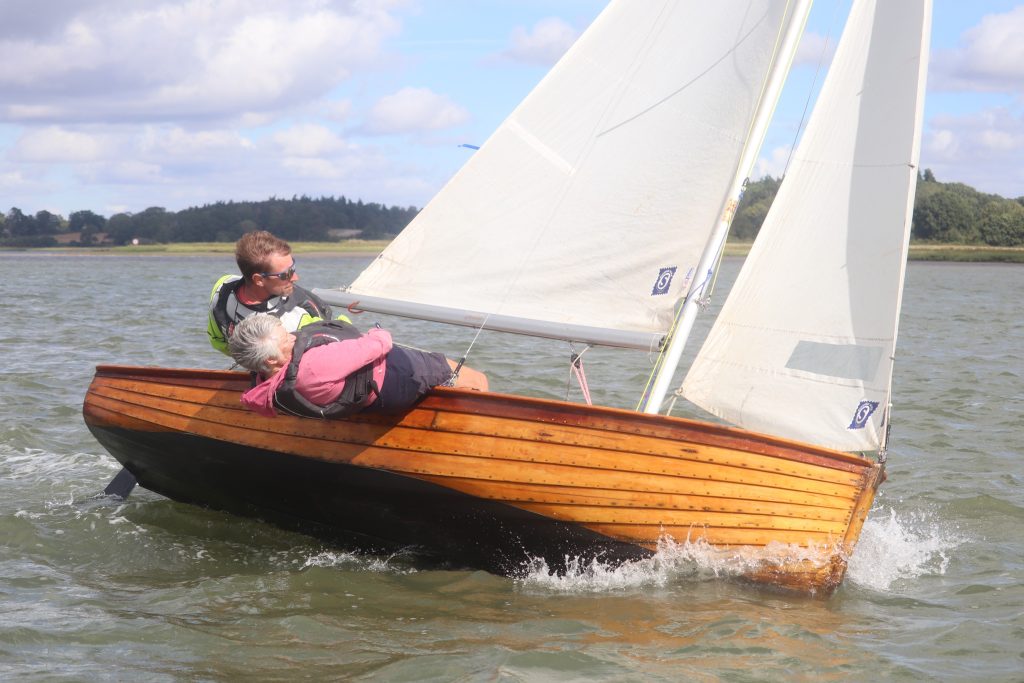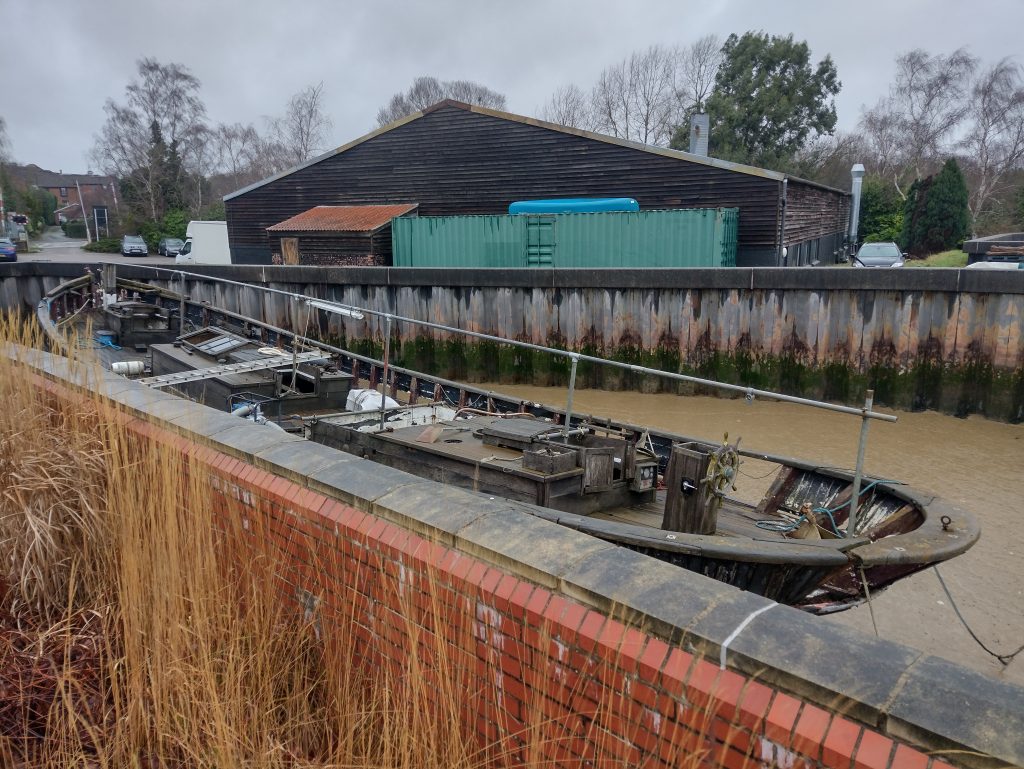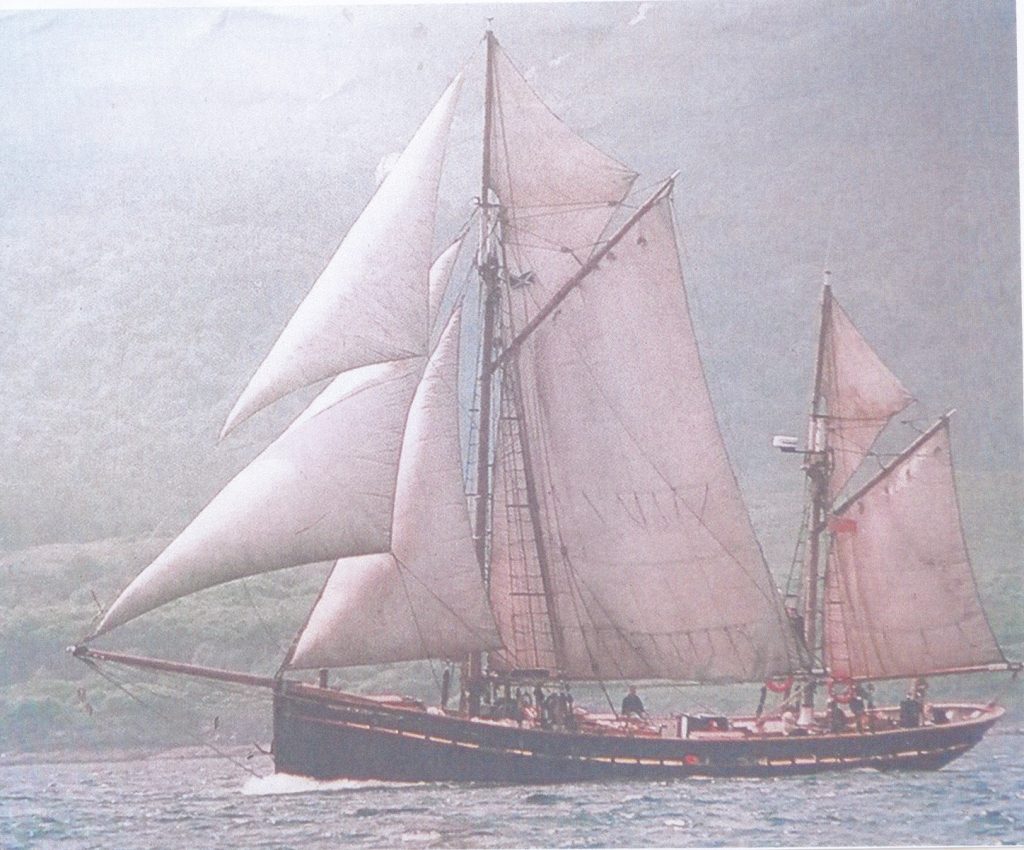By Julia Jones
How many boats on the Deben are more than 75 years old?
The RDA Journal is beginning a year-long project to identify our oldest boats of any type and size. The only criterion is that they must still be floating for at least part of the time — either with the tide, if they live on a beach or are in use as a houseboat, or seasonally if they are laid up ashore for part of the year. Venerable wrecks like the Lady Alice Kenlis (1867) who no longer rises with the flood, or the longer term inhabitants of the Woodbridge Boatyard’s ‘rehoming shed’, can’t qualify – unless their fortunes change.

The Dragonfly class was created for members of the Waldringfield Sailing Club and turned 75 years old last year. [Photo: Alexis Smith]
We know we have a number of centenarian yachts on the river. The Deben Cherubs began reaching their significant birthdays in 2024; Clytie turned 100 in 2022; Nirvana has just reached triple figures (but will she be back on the water this year?). Yet even they are not the oldest. The beautiful gaff cutter Kestrel, often moored at Waldringfield, was built in 1891; Try Again, moored in Ramsholt, is a similar vintage and I suspect she’s not alone.
Few people will be surprised to discover that many of the barges, and other former working boats that now make homes for people, are maritime senior citizens. And like senior citizens many of them have stories to tell – think of the Dutch barge Tijdstroom still showing her WW2 bullet holes (see The Deben magazine #63). I think we may also discover that there are smaller boats which have been well-looked after and achieved significant age. The Waldringfield Dragonfly class celebrated its 75th anniversary last year and the wooden Fireflies, of which we have only a few, were the class chosen for the first postwar Olympics in 1948. The original technique used for their construction (hot-moulded plywood) had been developed during WW2 for the de Havilland ‘Mosquito’ bombers. The Cadet dinghy class was also conceived in the years immediately following WW2 – have any of those very earliest examples survived on our river?
I’d like to think of this project as something a little more than an ‘I Spy’ spotters exercise. In recent years we have become accustomed to looking at history through objects, considering what they can tell us about the societies in which they were built: the needs they were intended to meet, the materials available and the hopes of the people who created them. 1950 is an interesting year to take as our closing point because the immediate postwar period saw the opening of a new attitude to the pleasure of sailing, particularly family sailing, which would transform the patterns of boat production and ownership. Maurice Griffiths, writing for Yachting Monthly in January 1950, said,
At the dawning of a new year a reflection on the sport of yachting is not out of place. As befell the sport in the impoverished Germany after the first world war, yachting in this country is becoming more and more the delight of the many instead of the pleasure of the few. Multitudes of little boats have sprung up in yacht yards, boat yards and in people’s gardens. Prohibitive costs have been countered by reduction in size; every measure is taken to reduce the expense and 30 footers, or even 20 footers, yield their contentment where nothing less than 20 tons would have been owned before the war.
But what has survived? The big, sturdy working boats, the elegant, expensive ‘gentleman’s yachts’, the smaller, more easily-maintained, family vessels? How many 75-year-olds and older will we find? Which area of the river has the most? And will we definitely identify the oldest boat on the river?

Some of our older boats are tucked away unobtrusively. Marguerite Explorer is a 70′ Danish Seiner built in 1934. She arrived on the Deben last year, towed in by Tam Grundy, and is awaiting restoration.

She has a fascinating history, including whale watching and scientific research in Scotland which we hope to share in a later RDA Journal article.
Please do take part if you own a pre-1950 boat of any size and condition – as long as she still floats, at least part time. Take a photo, add the boat’s name and age with any other details that you know (see the form below) and email it to me at [email protected] with the subject line Boats Still Floating.
Or post a printed copy (or a letter with the information) to Julia Jones, Sokens, Green Street, Pleshey, near Chelmsford, Essex. CM3 1HT. I’m hoping these printed forms will be available in some of our yards and clubs.
